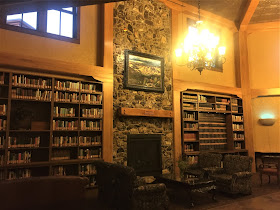September 14, 2019
Besides capitol buildings, another thing we like to visit in each state is the state high point. Bob has checked off more than I have, but I'm proud to say that among the state high points I've conquered are California's (Mt. Whitney, 14,505 feet) and Colorado's (Mt. Elbert, 14,440 feet).
North Dakota's high point (White Butte, 3506 feet) isn't quite in the same league as those other two, but it certainly beat Florida's high point (Britton Hill, 345 feet), which I've also "climbed." Believe it or not, in the rankings of state high points, North Dakota's comes in at #30.
The turn-off from the main highway was well marked . . .
. . . but once we hit the side roads, there were no more signs to get us to where we needed to go. Still, we were in better shape than this poor porcupine who looks like he got run over. (I wonder if he left some quills in the tire?)
Bob actually stopped and asked for directions
twice (a miracle), and eventually we did find this sign (next to what can loosely be described as a parking lot) that told us that if we followed the path next to the fence for a mile, we would arrive at the trailhead.
So that's what we did. We didn't get started until late afternoon, and I recall being much more concerned about being able to make it up and back before dark than Bob was.






























